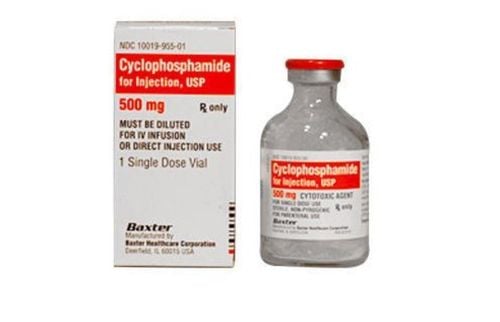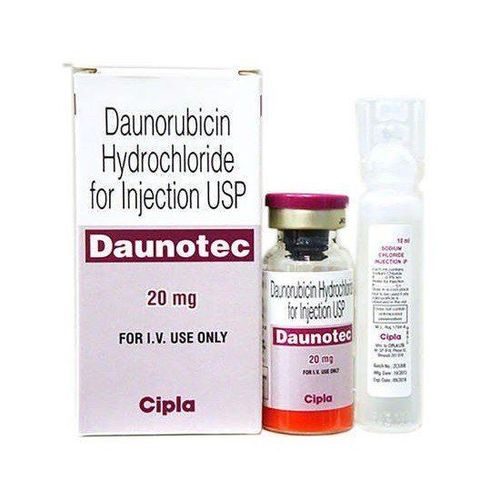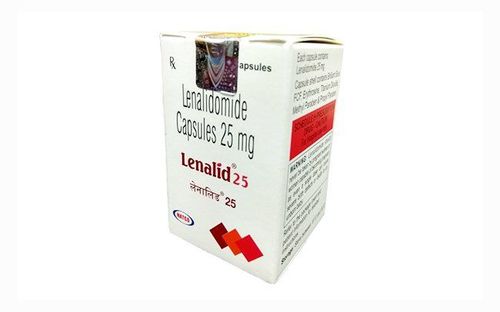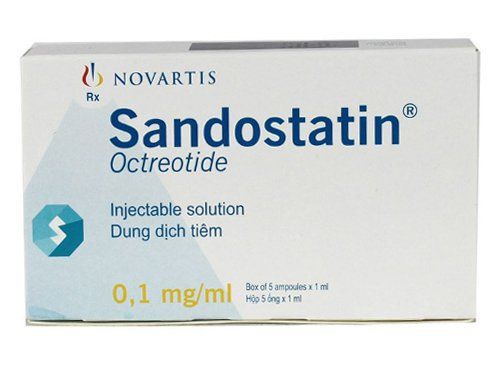This is an automatically translated article.
Non-proliferative cells in the body are relatively insensitive to the drug Azacitidine, but the drug causes direct cytotoxicity on abnormal hematopoietic cells in the bone marrow.
1. What is Azacitidine?
Azacitidine is an anticancer drug that kills abnormal cells in the bone marrow by inhibiting a process called DNA methylation, which is essential for cell reproduction. When abnormal cells cannot divide and grow, they die. Azacitidine is indicated for the treatment of adults who are not eligible for hematopoietic stem cell transplantation such as:
myelodysplastic syndromes; Chronic myelomonocytic leukemia with 10-29% blast cells without myeloproliferative disorders; Acute myeloid leukemia with 20 - 30% blast cells and polyclonal dysplasia; Acute myeloid leukemia with more than 30% blast cells.
2. How to take Azacitidine
2.1. Dosage of Azacitidine for adults Myelodysplastic syndrome: The first cycle uses 75mg/m2 by infusion or subcutaneous injection, daily injection for 7 days and repeat cycle every 4 weeks. After 2 cycles of Azacitidine, the dose may be increased to 100 mg/m2 if no adverse effects are observed and no toxicity other than nausea and vomiting is observed. The minimum duration of azacitidine treatment is 4-6 cycles. Acute myeloid leukemia: Initial cycle 75mg/m2 by infusion or subcutaneous injection daily for 7 days, repeat cycle every 4 weeks. After 2 cycles of azacitidine dosing, the dose can be increased to 100 mg/m2, if no beneficial effects or toxicity other than nausea and vomiting occur. The duration of treatment with Azacitidine is at least 4-6 cycles and can be continued if the patient responds to treatment. Azacitidine dosage adjustment for hematological toxicity in patients at the start of Azacitidine therapy with WBC ≥3000/mm3, ANC ≥1500/mm3 and platelet count ≥75,000/mm3. 2.2. Azacitidine dosage for children The safety and effectiveness of Azacitidine in children < 16 years of age have not been established.
2.3. Azacitidine dosage for the elderly There is no significant difference in the safety and efficacy of Azacitidine compared with the young, no dose adjustment of Azacitidine is required. Renal function should be evaluated periodically when azacitidine is used, because azacitidine and its metabolites are eliminated by the kidneys, elderly patients are often at risk of decreased renal function. If there is an increase in BUN or serum creatinine, the next cycle of Azacitidine should be delayed until values have returned to normal or started and reduced the dose of Azacitidine by 50% for the next course. Severe renal impairment (ClCr < 30mL/min) does not significantly affect the use of Azacitidine subcutaneously. Therefore, Azacitidine can be administered to patients with renal impairment without cyclic dose adjustment.
2.4. Azacitidine Dosage for Hepatic Impairment Azacitidine has the potential to cause hepatotoxicity in patients with pre-existing severe hepatic impairment, therefore caution should be exercised when Azacitidine is administered to patients with liver disease. The safety and efficacy of azacitidine in patients with myeloproliferative disorders and hepatic impairment have not been established.
If a dose of Azacitidine is missed or is not taken at the usual time, take your Azacitidine dose as soon as possible the same day and continue taking it at your normal schedule the next day. Do not take 2 doses of Azacitidine on the same day. If the patient vomits, do not take another dose of Azacitidine on the same day and resume the normal schedule the next day. Your doctor may prescribe medication to prevent nausea and vomiting while taking Azacitidine. Patients should take this medication 30 minutes before each dose of Azacitidine.
3. Contraindications of the drug Azacitidine
Do not use Azacitidine for the following cases:
Hypersensitivity to Azacitidine or any of its ingredients; People with advanced malignant liver tumors; Women are breastfeeding.
4. Azacitidine drug storage
Store Azacitidine in its original, labeled packaging at room temperature and in a dry place (unless otherwise directed by your healthcare provider or pharmacist). Do not remove the 2 desiccants inside the original bottle of Azacitidine.
5. Possible side effects of the drug Azacitidine
Common side effects of Azacitidine:
Subcutaneous injection: Nausea, anemia, thrombocytopenia, fever, leukopenia, diarrhea, fatigue, erythema at the injection site, constipation; Intravenous injection: petechiae appear, asthenia, hypokalemia. Anorexia, decreased appetite, hypokalemia, insomnia, dizziness, headache, shortness of breath, nosebleeds, diarrhea, vomiting, constipation, nausea, abdominal pain, arthralgia, musculoskeletal pain, fatigue fatigue, weakness, chest pain, erythema, injection site pain, weight loss. Sepsis, respiratory infection, urinary tract infection, cellulitis, diverticulitis, oral fungal infection, sinusitis, pharyngitis, rhinitis, skin infection, thrombocytopenia, bone marrow failure, hemorrhage Intracranial hemorrhage, syncope, drowsiness, coma, gastrointestinal bleeding, alveolar hemorrhage, stomatitis, bleeding gums, dyspepsia... Rare side effects of Azacitidine:
Hypersensitivity, peritonitis Cardiac arrest, liver failure, progressive hepatic coma, dermatosis, acute febrile neutropenia, pyoderma gangrenosum, renal tubular acidosis, atrial fibrillation, heart failure, congestive heart failure, cardiac arrest, disease congestive heart muscle... Rare side effects of azacitidine
Tumor lysis syndrome Interstitial pneumonitis Injection site necrosis. Azacitidine side effects of unknown frequency
Necrotizing tissue inflammation.
6. Notes when using the drug Azacitidine
Liver function tests, serum creatinine, and serum bicarbonate should be determined prior to initiation of azacitidine therapy and before each cycle of therapy. A complete blood count should be performed prior to initiation of azacitidine therapy and as necessary to monitor response and toxicity or before each treatment cycle. Patients should be given antiemetic prophylaxis prior to azacitidine therapy. Azacitidine treatment has been associated with anemia, neutropenia, and thrombocytopenia, especially during the first 2 cycles of azacitidine. After administering the recommended dose of Azacitidine for the first cycle, reduce or delay the dose for subsequent cycles based on the blood cell count and hematological response. Progressive hepatic coma and death have rarely been reported in azacitidine-treated patients with a large tumor burden secondary to metastasis, particularly in those with serum albumin levels < 3 g/dL, requiring perform liver function tests before starting treatment with azacitidine. Renal abnormalities (hypercreatinine, renal tubular acidosis), renal failure, and death have been reported rarely in patients treated with parenteral azacitidine in combination with other antineoplastic agents (eg, etoposide). . If serum bicarbonate is decreased to < 20 mEq/L or increases BUN or serum creatinine, reduce dose or discontinue Azacitidine therapy. Necrotizing fasciitis has been reported in patients treated with azacitidine.
7. Note when using Azacitidine for pregnant and lactating women
Azacitidine can harm the fetus, cause teratogenicity, embryo death in animals. Therefore, pregnancy should be avoided during treatment with azacitidine, especially during the first trimester unless clearly needed.
There are no data on whether Azacitidine or its metabolites are distributed into breast milk, so breast-feeding should be discontinued or treatment with Azacitidine should be discontinued if the mother is breast-feeding.
Please dial HOTLINE for more information or register for an appointment HERE. Download MyVinmec app to make appointments faster and to manage your bookings easily.













